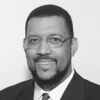Making Workforce Development Relevant
Workforce development has emerged as one of the major factors in determining the economic success of a nation, state, community, or business. The 21st century knowledge economy is rooted in globalization, technological change, a changing industrial and occupational structure, and new demographics. The most profound element common to all of these is the quality and quantity of "human capital." This, in essence, is what workforce development is all about.
Nationally, economists, policy-makers, and government leaders have recognized the need to prioritize our national investment in education and make the public education system more accountable. Recently, policy makers and leaders have also understood the importance of transforming the historical national employment and training system into a modern, relevant, and effective workforce development system linked to economic development. This has been accomplished by changing the focus from training individuals in dozens of targeted programs to the creation of regional workforce boards and one-stop systems to serve the entire population of potential workers and employers.
This universal population of workers consists of entrant, marginal, incumbent, and elite workers. Similarly, businesses that employ workers and create jobs range from small, single proprietor businesses to large, multi-national corporations. Each of these worker and employer groups has unique challenges that must be addressed by the newly emerging workforce development system. In upcoming issues, we’ll explore the challenges of these groups.
In the meantime, at the state level, governors have been given the challenge of creating statewide workforce development systems composed of dozens of federal and state funded programs, sometimes administered through multiple state agencies. In our state, for example, there are more than 60 programs administered by about 17 state agencies. This "silo system" is highly inefficient, disjointed, and confusing to the individual and business customers it’s supposed to serve. It also represents duplication of effort and wasted resources in a time when public resources should be maximized.
While there have been some modest efforts over the last few years to link several of these programs under one state agency, an effective, integrated, and consolidated state workforce development system linked to local workforce boards has yet to emerge.
Locally, workforce development boards have been given the challenge of developing relevant, market-driven, customer-centered workforce systems. Partners and stakeholders include: chambers of commerce, employer’s associations, economic development organizations, K-12 education, education-for-employment entities, regional offices of education, community colleges, universities, private training organizations and institutions, units of government, regional planning organizations, organized labor, community-based organizations, and faith-based organizations.
These workforce systems must meet the needs of their local communities. To be relevant, workforce boards must be able to ask and address several questions that define the nature of workforce development. These include:
Nationally, economists, policy-makers, and government leaders have recognized the need to prioritize our national investment in education and make the public education system more accountable. Recently, policy makers and leaders have also understood the importance of transforming the historical national employment and training system into a modern, relevant, and effective workforce development system linked to economic development. This has been accomplished by changing the focus from training individuals in dozens of targeted programs to the creation of regional workforce boards and one-stop systems to serve the entire population of potential workers and employers.
This universal population of workers consists of entrant, marginal, incumbent, and elite workers. Similarly, businesses that employ workers and create jobs range from small, single proprietor businesses to large, multi-national corporations. Each of these worker and employer groups has unique challenges that must be addressed by the newly emerging workforce development system. In upcoming issues, we’ll explore the challenges of these groups.
In the meantime, at the state level, governors have been given the challenge of creating statewide workforce development systems composed of dozens of federal and state funded programs, sometimes administered through multiple state agencies. In our state, for example, there are more than 60 programs administered by about 17 state agencies. This "silo system" is highly inefficient, disjointed, and confusing to the individual and business customers it’s supposed to serve. It also represents duplication of effort and wasted resources in a time when public resources should be maximized.
While there have been some modest efforts over the last few years to link several of these programs under one state agency, an effective, integrated, and consolidated state workforce development system linked to local workforce boards has yet to emerge.
Locally, workforce development boards have been given the challenge of developing relevant, market-driven, customer-centered workforce systems. Partners and stakeholders include: chambers of commerce, employer’s associations, economic development organizations, K-12 education, education-for-employment entities, regional offices of education, community colleges, universities, private training organizations and institutions, units of government, regional planning organizations, organized labor, community-based organizations, and faith-based organizations.
These workforce systems must meet the needs of their local communities. To be relevant, workforce boards must be able to ask and address several questions that define the nature of workforce development. These include:
- Will our community have enough workers to meet the needs of businesses for the foreseeable future?
- If not, where will we get our future workforce, and how will we get them?
- Will our workforce have the knowledge and requisite skills to succeed in the 21st century knowledge economy?
- If not, how can we improve the quality of the workforce employers will need to be competitive and succeed in our community?
- Is there an effective system of matching the skills and talent employers need with the skills and talent people have?
- If not, are there better ways or a more effective system for matching these skills and talents?
These are just a few of the questions that begin to define the task for local workforce development boards. The answers to these questions may impact the economic success of our community for years to come. IBI

